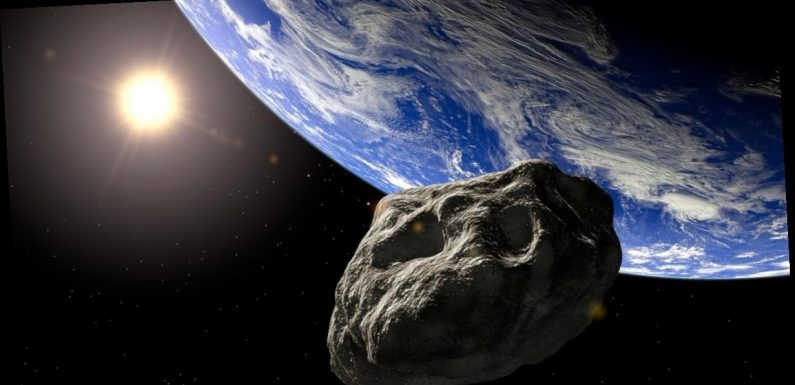When a recent poll was taken about what NASA should do, detecting killer asteroids and defending the planet against their colliding with the Earth won the support of 68 percent of respondents, more than establishing a base on the moon, sending astronauts to Mars, or standing up the Space Force.
While the United States is still embarked on those and other missions, NASA has announced that it will deploy a space telescope designed to detect Earth approaching asteroids that might prove to be a danger, according to Ars Technica. The mission may save the human race from suffering the fate of the dinosaurs.
BREAKING: Big Pharma In Outrage Over This Breakthrough Natural Painkiller
At a cost of less than $600 million, the asteroid detecting telescope would launch no earlier than FY2025, depending on how much funding it receives. The goal is to detect 65 percent of Earth approaching asteroids that are 140 meters across more within five years and 90 percent within ten years. If an asteroid were to hit the Earth of that size it would cause unprecedented devastation on a regional scale.
NASA announced the mission in the wake of a spate of sightings of large asteroids that passed relatively close to the Earth, detected too late to do anything about them had they been on a collision course. The mission also represents a sea change of policy that existed during the Obama administration.
President Obama had established the Asteroid Redirect Mission, which was designed to send a crewed Orion space vehicle to an asteroid and to redirect it to lunar orbit. The mission was subsequently modified to pluck a boulder off of the surface of an asteroid and send it to lunar orbit. Then astronauts would study the rock at leisure.
Most of the scientific community decried the ARM as a waste of money and time that would be better spent detecting Earth approaching asteroids and developing ways to divert them in case they prove a threat. One of the first acts of the Trump administration had been to cancel the ARM. Now it has come further and proposed a serious asteroid detection mission.
Scientists could not be more pleased. “NASA’s commitment to a space-based asteroid survey is a huge step forward for anyone who cares about human destiny,” Richard Binzel, an asteroid expert at the Massachusetts Institute of Technology, told Ars. “We are finally going to rely on knowledge, rather than luck, as our plan for dealing with hazardous asteroids.” Binzel is one of the world’s leading experts on asteroids and comets and was a critic of the ARM proposal.
NASA is also launching a mission to a double asteroid body called Didymos, using a kinetic impactor to attempt to deflect that smaller body. It would be the first serious test of deflecting an asteroid.
The scenario of an asteroid headed on a collision course to Earth has been the subject of numerous movies and TV shows. In 1998, two major motion pictures, “Armageddon” and “Deep Impact,” were released to popular acclaim.
The first movie starred Bruce Willis, a young Ben Affleck, and a pre-Lord of the Rings Liv Tyler. “Armageddon” featured a lot more explosions and action than it did scientific accuracy.
“Deep Impact.” Which involved a comet headed to Earth, was received with much better critical acclaim and had much more scientific accuracy than its counterpart. The movie starred a pre-Lord of the Rings Elijah Wood, Robert Duval, and Morgan Freeman as the first African American president of the United States depicted ten years before Barack Obama.
TRENDING: Eat This - Never Forget A Single Thing Again
It should be mentioned in passing that an offbeat TV series called:” Salvation” that depicted an asteroid impact threat, among much else. The series lasted only two seasons and ended with a twist that, sadly, would never be pursued in the third season.
Popular culture has informed a large part of popular interest in the asteroid impact threat. The chances of an asteroid hitting the Earth are small, but not nonexistent. In 1908, an asteroid hit an area in Siberia that caused an explosion that was the equivalent of a 20 to 30 megaton atomic bomb. More recently, a rock exploded over the Urals mountain town of Chelyabinsk Oblast at a height of almost 30 kilometers with the power of a 400 to 500 kiloton nuclear bomb. The explosion caused widespread damage to buildings and numerous injuries.








